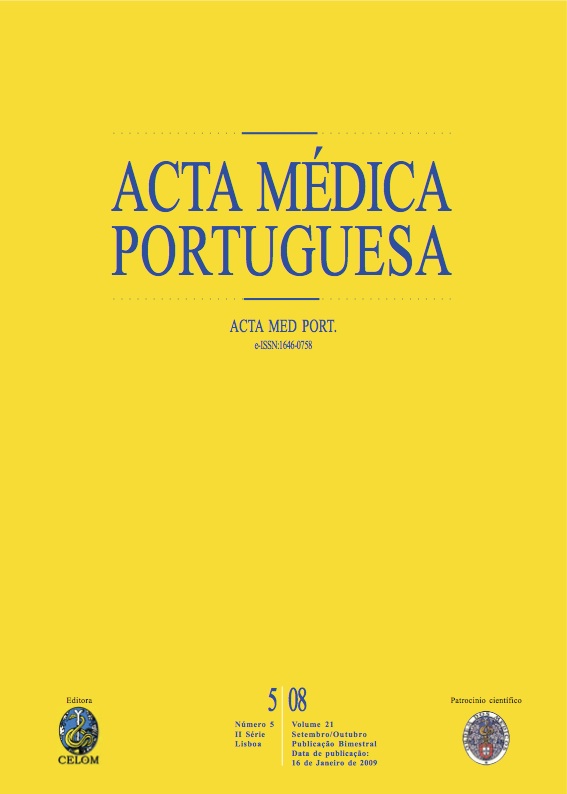Hysteroscopic diagnostic accuracy in post-menopausal bleeding.
DOI:
https://doi.org/10.20344/amp.1636Abstract
To evaluate the diagnostic accuracy of hysteroscopy at our unit for postmenopausal bleeding, specially concerning proliferative lesions.We analyzed the results of 335 hysteroscopies that were done during the last 8 years in our hysteroscopic unit and we compared the hysteroscopic diagnosis with the biopsy result done during the procedure. Data were group according to pathologic findings in three groups normal, proliferative lesions and benign lesions. Data were analyzed by direct comparison. Sensitivity and specificity were calculated, Kappa index was used to access the inter-rater reliability, and likelihood ratio and the post test probability were used to analyze the true value of hysteroscopy.Women were aged between 36 and 88 years, with an average of 61,5. Histological diagnosis was atrophy in 42,1% patients, polyps in 43,3%, sub-mucous fibromioma in 5%, hyperplasic lesions in 9,6%, half of them being carcinomas. Overall Kappa index for the 3 groups was 0,831 which is in line with excellent agreement. Concerning proliferative lesions (hyperplasia + carcinoma vs carcinoma alone) and comparing to histology, sensitivity was 78,1% vs 81,3%; specificity 95,7% vs 98,7%. The positive likelihood ratio was 18,2 vs 64,8 and the negative likelihood ratio was 0,23 vs 0,19. The probability post positive test was 66% vs 76% and the probability post negative test was 2,4% vs 0,95%. No cases of carcinoma were identified among the 129 women diagnosed as having atrophy. However 3,9% of all the lesions regarded as being polyps at the hysteroscopy proved to be proliferative lesions at hysteroscopy.Hysteroscopy at our unit is a highly accurate procedure concerning post menopausal endometrial bleeding, with its results being in line with the literature. Diagnosing atrophy or excluding a proliferative lesion by the observer was highly predictive of a negative carcinoma in the histology. Using this argument whenever a proliferative lesion was excluded, only 1 in 302 hysteroscopies hid a carcinoma. Polyps should be regarded as possible proliferative lesions. Despite this result we believe a biopsy should always be undertaken no matter the observer's diagnosis.Downloads
Downloads
How to Cite
Issue
Section
License
All the articles published in the AMP are open access and comply with the requirements of funding agencies or academic institutions. The AMP is governed by the terms of the Creative Commons ‘Attribution – Non-Commercial Use - (CC-BY-NC)’ license, regarding the use by third parties.
It is the author’s responsibility to obtain approval for the reproduction of figures, tables, etc. from other publications.
Upon acceptance of an article for publication, the authors will be asked to complete the ICMJE “Copyright Liability and Copyright Sharing Statement “(http://www.actamedicaportuguesa.com/info/AMP-NormasPublicacao.pdf) and the “Declaration of Potential Conflicts of Interest” (http:// www.icmje.org/conflicts-of-interest). An e-mail will be sent to the corresponding author to acknowledge receipt of the manuscript.
After publication, the authors are authorised to make their articles available in repositories of their institutions of origin, as long as they always mention where they were published and according to the Creative Commons license.









